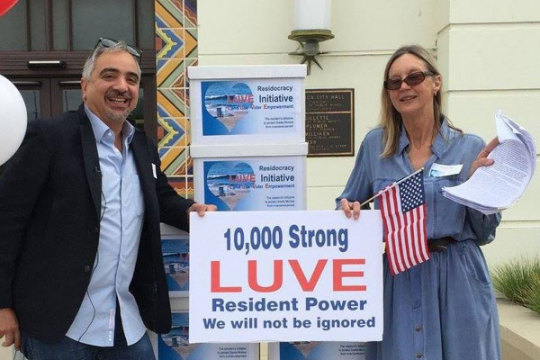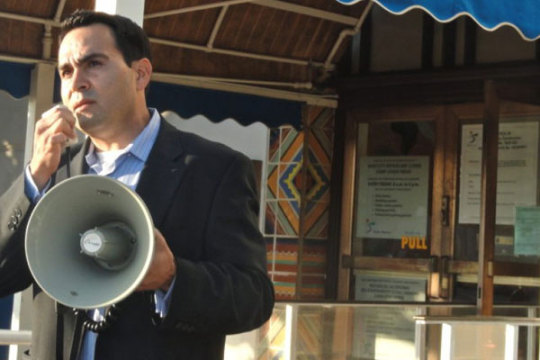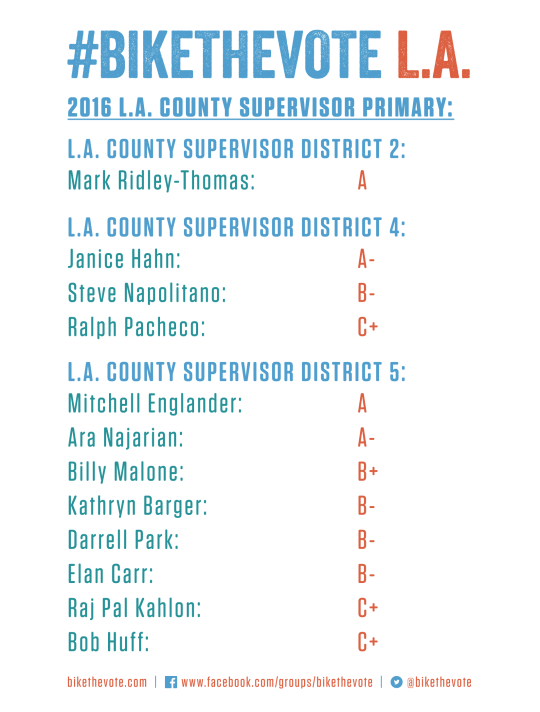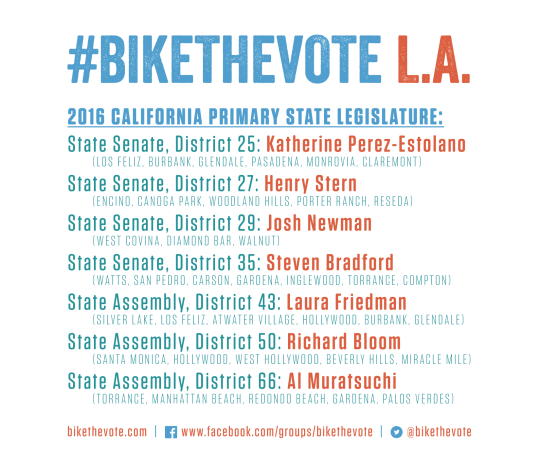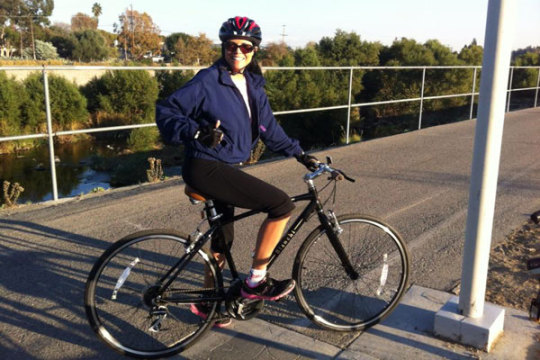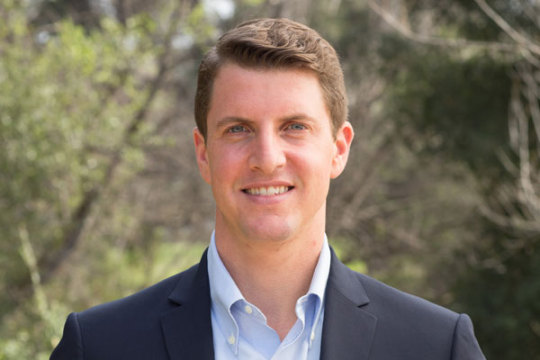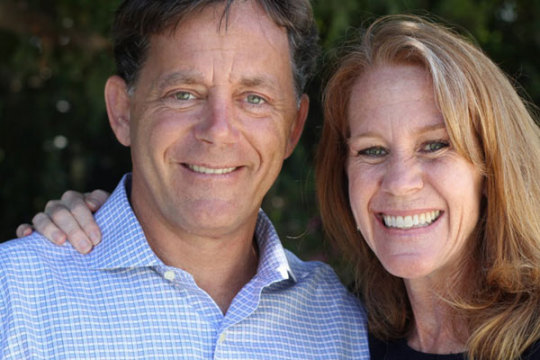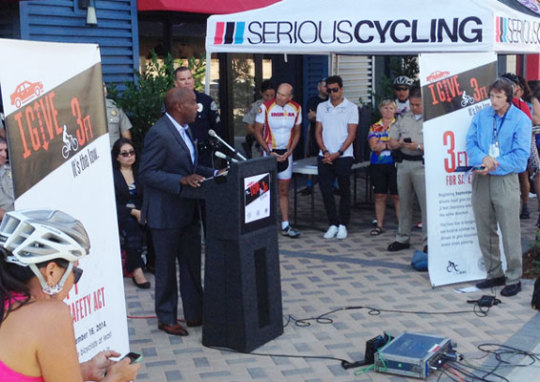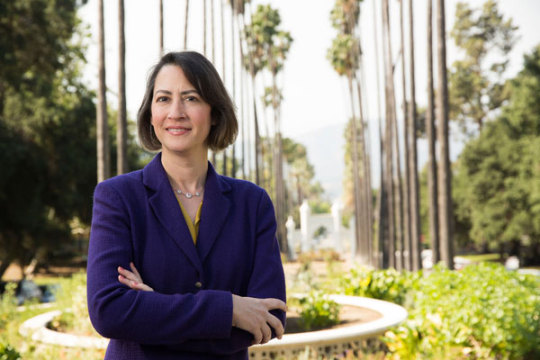Candidate campaign page: http://www.katherine4sd25.com/
Those familiar with Katherine Perez-Estolano and her work in Southern California know her as a strong advocate on the environment. She has dedicated her career, which has spanned the public, private and nonprofit sectors, to working with communities on sustainable transportation and development solutions. Her responses to the CalBike survey showed that she understands the role the state can play in stitching together and strengthening our fragmented bike networks. We’re especially excited by her proposal to accelerate multi-jurisdictional active transportation projects, recognizing – as anyone in the San Gabriel Valley most certainly would – that city borders do not determine where people need to bike. She is the only candidate for Senate District 25 with a background studying and working in development, land use, and transportation, and she would bring a knowledgeable and forceful voice in those areas. With an exceptional range of experience that will help to make her a superb leader on active transportation, Katherine Perez-Estolano gets our enthusiastic endorsement for California State Senate.
(See below for Katherine Perez-Estolano’s full CalBike questionnaire response)
1. Do you ride a bicycle in your district and/or in Sacramento?
Yes
2. If yes, for what purpose(s) and how often? How do you most commonly commute to work?
I regularly bike recreationally and for small local trips – coffee shop, local market and on weekends and evenings.
I generally commute to work in my Prius. I have children that are involved in many activities which requires me to have flexibility. But during workdays, I always take transit for meetings which is the best way to get around downtown.
3. If no, what would inspire you, and the 60% of people who are interested in riding, but concerned about safety to ride a bike for transportation?
N/A
4. Would you commit to joining a group ride with local advocates along a route that illustrates the bicycle infrastructure conditions of the district you are running for?
Yes
5. Caltrans has established a goal to triple the number of bike trips by 2020. Do you support this goal?
Yes
6. Research has shown that the most effective way to boost the number of people bicycling is to create interconnected “complete bikeway networks” of physically protected bike lanes and traffic-calmed streets. The California Bicycle Coalition is seeking to create a new state program to provide large grants of $25-$50 million to build such networks in the communities which need it most. It will incentivize holistic planning of networks rather than piecemeal planning of one street at a time. Do you support using state funds for a competitive complete bikeway network grant program?
I believe that we should make a commitment to work with cities to build and expand our bike network systems. The state should partner with local entities, community groups and non-profits to accelerate the development of active transportation programs including complete bike networks that bridge cities to one another and link destinations such as job centers, educational institutions, healthcare facilities and parks together. In my district, there is already a strong culture supportive of biking, so we are uniquely prepared and ideal for new bike infrastructure. With the many universities, compact urban development, the GoldLine light rail corridor, and well-organized bike coalitions (Bike SGV), these efforts are congruent with the values of my district. Is $25 or $50 million enough? I am not sure but I believe that the state needs to incentivize cities to advance local bike improvement efforts.
7. Do you support our complete streets provisions in SBX 1-1 of the special session to mandate the inclusion of “new bicycle and pedestrian safety, access, and mobility improvements” in every non-freeway road project funded by the state? It calls for sidewalks and protected bike lanes or bike paths in transit-dense areas on most roads with a speed limit over 25 miles per hour.
Yes
8. The Active Transportation Program (ATP), the sole state funding source for biking, walking, and safe routes to school improvements, was created by the Brown administration in 2013 with the stated intention to increase it continually. However, the Governor’s latest budget proposes no increase for the third straight year. Current funding levels on a per capita basis place California in the middle of the pack among states who provide dedicated active transportation funding. To reflect Caltrans’ goal to triple biking and double walking trips by 2020, do you support doubling the ATP?
I absolutely support increasing funding for the ATP, but the amount in which we increase it and how it is done requires a more nuanced conversation. When making decisions about our state budget. I would take a holistic approach. None of these decisions should be made in a vacuum and many factors impact the end result. The state of the national economy, the state of California’s fiscal condition and our rainy day fund, what programs and services have gone unfunded or underfunded for a long period of time, and lastly what the potential unintended impacts are just some of the factors that would go into my decision-making. While we must be careful and thoughtful about how we spend our resources, I am supportive of prioritizing funding for alternative transportation, including biking.
9. Bike sharing programs are spreading throughout California, but they often do not reach low-income neighborhoods. Do you support providing state funds to allow these programs to serve all Californians who could reasonably benefit, in the same way that public transit serves the public?
Yes
10. About 3,000 people are killed on California streets every year. Do you support a “Vision Zero” goal of zero traffic fatalities by a certain date?
Yes
11. The California Air Resources Board estimates that 38% of California’s 447 million metric tons of carbon emitted every year comes from the transportation sector, which along with other emissions, results in thousands of deaths and millions of dollars in wasted health care spending. What do you feel are the three most important actions the state should take to reduce carbon emissions from transportation?
A. Workforce Training: We must transition our economy from a carbon based to a low carbon or carbon free economy. In order to protect those most vulnerable we must take efforts to re-train our workforce to allow workers in high carbon producing industries (auto industry and energy) to find employment in the sectors of the future as the state begins to shift its priorities. It is our goal to reduce carbon emissions, but it is also our job to protect our workers and ensure they have the training necessary to participate in the future carbon free economy. My goal is to make sure the new green economy benefits everyone.
B. Reduction of Mobile Source Pollution: Another top priority is to continue to drive down our pollution from mobile sources. We have made great strides but we need to continue our progress with fleet conversions to alternative fuels and accelerate the introduction of electric vehicles into disadvantaged communities, currently being made possible through Cap and Trade funds.
C. Expand Active Transportation Program: We need to expand funding for alternative transportation programs (ATP). It is not enough to have some cities integrate ATP efforts while others don’t. ATP improves the health of people in our communities, reduces greenhouses gases, increases transit ridership, makes good use of our infrastructure and is a more responsible use of limited public funds to revitalize our cities.
12. Should cap-and-trade funds be used for highway congestion relief projects that expand road capacity?
No
13. If you could send out one tweet to the bike community that you think would win over their support, what would it say?
Want a biker for CA Senate? That’s me! I’ll be a #BikeCA leader. Let’s make bike investments now! #groovysenator4bikes
14. Do you have any other comments or questions about how you have supported or would support the California Bicycle Coalition’s mission of enabling more people to bicycle for healthier, safer, and more prosperous communities for all?
I have been a lifelong believer in alternative transportation options and the expansion of programs particularly in disadvantages communities. As a planner and developer, I have always strived to include an integrated multi-modal approach to planning and project development. As the state has developed goals to reduce greenhouse gases and eventually petroleum use, the state should assist local efforts in the implementation of bike and pedestrian projects that would contribute to these climate change goals.
I am committed to California being a model state where bikers are safe because we have a commitment to Vision Zero. I believe we need to invest in bike infrastructure including bike stations, bike corridors, and bike amenities to encourage people to ride their bikes. Importantly, I believe in the diversity of the bike community which embraces cultural and ethnically diverse people of our state. I see it every year in CicLAvia!
